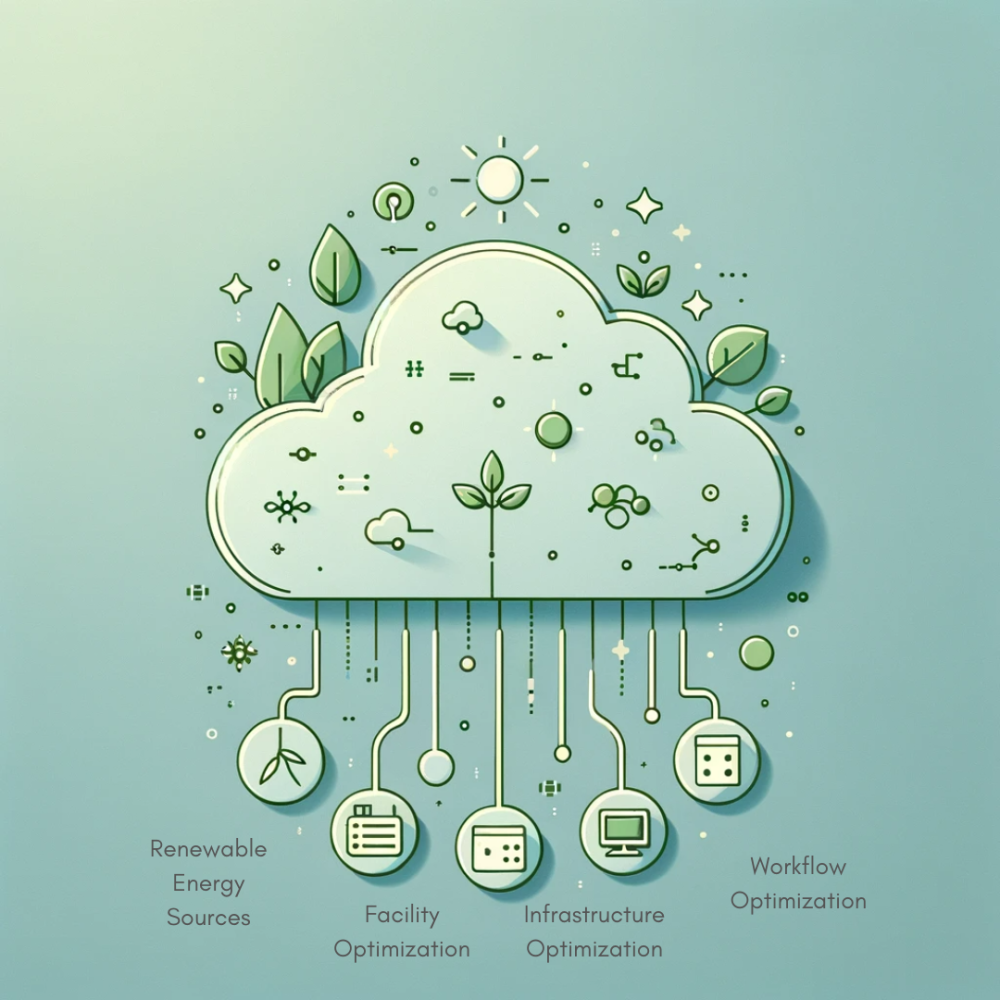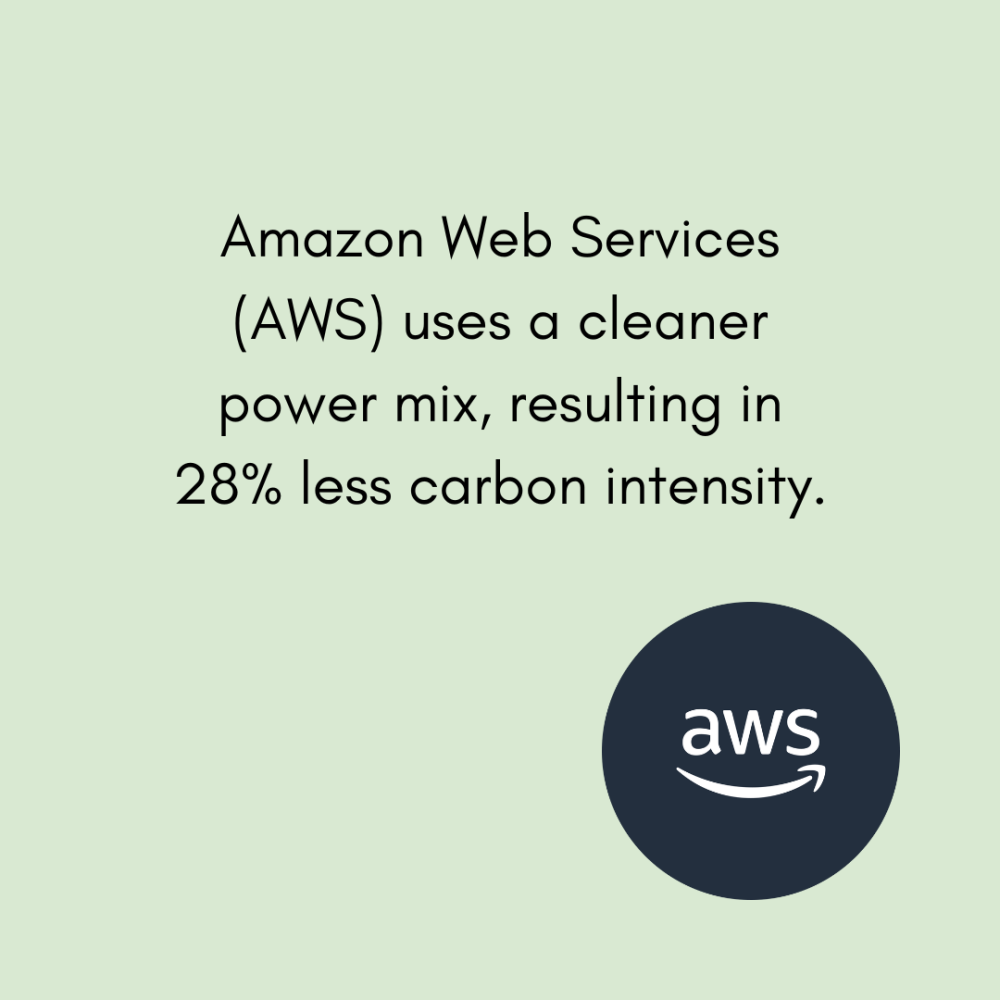Call Anytime 24/7
Mail Us For Support
Office Address
Now Hiring: Are you a driven and motivated 1st Line IT Support Engineer?
Office Hours: 08:00am-6:00pm
Call Anytime 24/7
Mail Us For Support
Office Address

The recent financial success of Microsoft, announced on October 24, 2023, highlights a significant trend in the tech industry: the rise of sustainable cloud-based solutions. With a remarkable 13% increase in revenue, reaching $56.5 billion, and a net income of $22.3 billion, these figures are not just a testament to Microsoft’s growth but also an indicator of the evolving role of cloud computing in modern business strategies.
This surge, driven by the integration of cloud services and AI, as emphasized by Microsoft’s CEO Satya Nadella, is reshaping how companies operate and innovate. It brings to the forefront the importance of cloud sustainability. As businesses globally strive to adapt and thrive in this digital era, the focus shifts to how they can achieve sustainability in their cloud-based solutions.
In this blog, we will explore the concept of Cloud Computing Sustainability and the strategies for achieving Sustainability in Cloud-Based Solutions. This is not just a trend but a critical shift for companies aiming to maintain a competitive edge and operate responsibly in a technology-driven world.
A European Commission study in 2020 reported that data centers in the EU accounted for 2.7% of its electricity demand in 2018, a figure expected to rise to 3.21% by 2030. Similarly, the U.S. Department of Energy notes that data centers consume about 2% of the country’s total electricity, with the International Energy Agency estimating that 1.3% of global electricity usage in 2021 was attributed to data centers.
Green Cloud Computing emerges as a sustainable solution to this challenge. It is an approach that focuses on reducing energy consumption and carbon emissions in cloud-based technologies. This involves optimizing data center operations for energy efficiency and integrating renewable energy sources to lessen reliance on fossil fuels. Additionally, it encompasses responsible practices like minimizing the use of hazardous materials in cloud infrastructure and promoting the recycling and reuse of electronic components.
By adopting these sustainable practices, Green Cloud Computing not only addresses the immediate concerns of energy consumption but also contributes significantly to the broader goal of Cloud Computing Sustainability, marking a crucial step towards achieving Sustainability in Cloud-Based Solutions.

Green Cloud Computing employs a range of techniques to create more sustainable data centers:
Renewable Energy Sources: Cloud providers use solar, wind, hydropower, and large battery banks for energy storage. They also utilize renewable energy credits to offset their carbon footprint.
Facility Optimization: Utilizing AI and machine learning, cloud vendors optimize data center architecture, floor layouts, and locations. Innovative methods include using excess heat to warm nearby buildings and situating data centers in cold climates, underground, or in oceans.
Infrastructure Optimization: Adoption of modern, energy-efficient hardware is key. Techniques like dynamic voltage and frequency scaling are used to reduce energy consumption. Resource utilization is maximized through virtualization and containerization, leading to fewer servers and lower energy use.
Workflow Optimization: Cloud providers intelligently distribute workloads across servers, optimize network routes, and enhance server caching and portable storage to reduce network calls. Automating routine tasks also contributes to energy savings.
These strategies collectively contribute to the efficiency and sustainability of cloud computing, aligning with the goals of Cloud Computing Sustainability and aiding in the pursuit of Sustainability in Cloud-Based Solutions.
Green Cloud Computing is revolutionizing the IT industry with its positive environmental impact. Here are the key reasons why it matters:
Cloud data centers are often located closer to power facilities, reducing energy loss during transmission. Unlike traditional data centers, which are limited by location and budget, cloud computing data centers are designed for optimal energy use and temperature control, using less wattage for backup power and cooling.
Traditional private data centers often suffer from low utilization rates, as they are set up to handle peak server usage. In contrast, cloud computing consolidates machine use, operating at high utilization rates and increasing efficiency. This leads to a significant reduction in energy consumption and environmental impact, with public cloud servers being 2 to 4 times more efficient than traditional data centers.
Traditional data center hardware is often used for extended periods, delaying upgrades due to cost and complexity. With its higher utilization rates, cloud infrastructure tends to have a shorter lifecycle, leading to more frequent updates. This rapid refresh cycle means newer, more energy-efficient hardware is used, reducing long-term energy consumption.
Traditional data hardware systems require significant electricity for power supplies, cooling, and maintenance. Moving to the cloud can drastically reduce electricity usage. For instance, a study by Lawrence Berkeley National Laboratory suggests that moving business software to the cloud could save enough electricity annually to power Los Angeles for a year, lowering the energy consumption of these applications by 87%.

Cloud computing significantly reduces carbon emissions compared to traditional data centers. For example, Amazon Web Services (AWS) uses a cleaner power mix, resulting in 28% less carbon intensity. This also leads to lower climate control costs due to the use of energy-efficient equipment.
AWS is at the forefront of green cloud computing, actively investing in renewable energy projects like wind farms across the U.S. to power its data centers. As a member of ACORE and US PREF, AWS collaborates with policymakers to advance sustainability goals. With a commitment to increasing its renewable energy usage, AWS aimed to reach 40% by the end of 2016, progressing towards a long-term goal of 100% renewable energy. This initiative reflects AWS’s dedication to reducing the environmental impact of cloud computing and underscores the potential of cloud technology in promoting sustainable practices in the tech industry.
Many cloud providers are increasingly using renewable energy sources like solar, wind, and hydropower, which leads to reduced greenhouse gas emissions. Traditional energy sources, primarily fossil fuels, account for over 80% of global power consumption, making the shift to renewable energy in cloud computing a significant step toward sustainability.
The shift towards sustainable green cloud computing is not just an environmental imperative but also a strategic business decision. As highlighted in the United Nations Global Compact – Accenture Strategy CEO Study on Sustainability, 44% of CEOs envision a net-zero future for their companies within the next decade. Moreover, between 2013 and 2019, companies with high environmental, social, and governance (ESG) performance witnessed 4.7 times higher operating margins than their low ESG counterparts. Additionally, migrations to public cloud can result in 30-40% total cost of ownership (TCO) savings, making the transition both economically and environmentally beneficial.
The journey to sustainable green cloud computing involves several essential steps:
Traditional data centers are known for their excessive power usage. Transitioning to virtualization and containerization can significantly reduce energy needs. By dividing hardware into multiple portions, virtual machines, and containers allow for multiple operating systems or applications on a single server, thus requiring fewer servers and consuming less energy. Benefits include instant failover, uniform resource distribution, and high server utilization.
These are small, movable data centers distributed globally. They consume less energy due to their size and mobility, improve reaction times, decrease downtime, and feature built-in auto-scaling capabilities. Their proximity to users’ locations also contributes to energy efficiency.
Moving from monolithic applications to a microservices-based architecture can promote green cloud computing. Deploying interconnected microservices across various cloud nodes, especially when housed in containers like Docker, can reduce energy consumption. This setup also improves response times by positioning containers and microservices in optimal data center locations.
Data centers often struggle with efficient resource scheduling. AI-based techniques can intelligently schedule resources, leading to reduced power consumption. Machine learning and deep learning analyze historical data to predict resource usage patterns, enabling proactive measures for energy preservation.
Infrastructure as a Service (IaaS) delegates infrastructure management to cloud providers, who use virtual machines and containers to minimize the number of servers needed. This reduction in servers and data centers directly translates to lower energy consumption. Additionally, serverless infrastructure further promotes green computing by entrusting entire server management to cloud vendors skilled in modern energy-saving techniques.
In the quest for sustainable cloud solutions, the role of a specialized partner becomes indispensable. This need is underscored by ambitious commitments from industry giants like Google, which has pledged to reach net-zero emissions across its operations and value chain by 2030. Google’s goal to operate its offices, campuses, and data centers on carbon-free energy 24/7 sets a high bar for sustainability in the tech world. It’s a clear indicator of the direction in which cloud computing is headed – towards a more sustainable and environmentally responsible future.
Great. Now we know what exactly sustainable cloud solutions entail and what they can deliver for your company. What next? How do you effortlessly incorporate these operations into your business?
A partner in this journey brings a wealth of expertise and resources that are crucial for navigating the complexities of sustainable cloud computing. They provide the necessary guidance and technological know-how to align your cloud strategies with sustainability goals. This includes understanding and implementing the latest in energy-efficient technologies, navigating the intricacies of renewable energy sources, and ensuring that your cloud infrastructure not only supports but enhances your sustainability objectives.
Moreover, a partner can help translate these global commitments, like those made by Google, into actionable strategies for your business. They can tailor solutions that not only meet your specific needs but also contribute to the broader goal of reducing the environmental impact of cloud computing. This partnership is not just about leveraging technology; it’s about creating a synergy between your business objectives and the urgent need for sustainability in our digital world.

SphereGBS emerges as a pivotal player in this landscape, offering expertise and solutions tailored for businesses aiming to align with the sustainability wave in cloud computing. Our approach is deeply influenced by the global commitments to sustainability, such as those made by Google, and we strive to bring the same level of dedication and innovation to our clients.
At SphereGBS, we understand that the transition to a sustainable cloud environment is not just a technological upgrade but a strategic shift. We offer a comprehensive range of services and solutions designed to reduce complexity, cost, and risk while enhancing performance, security, and cost efficiency. Our team works closely with each client to determine the most effective infrastructure and application strategy, whether it involves modernizing for a private cloud or re-engineering for a public cloud.
Our commitment goes beyond just providing solutions. We aim to be a partner in your journey towards a sustainable future, helping you navigate the challenges and seize the opportunities that come with green cloud computing. With SphereGBS, you gain more than a service provider; you gain a partner who is as committed to your success as you are to contributing to a more sustainable and responsible digital world.